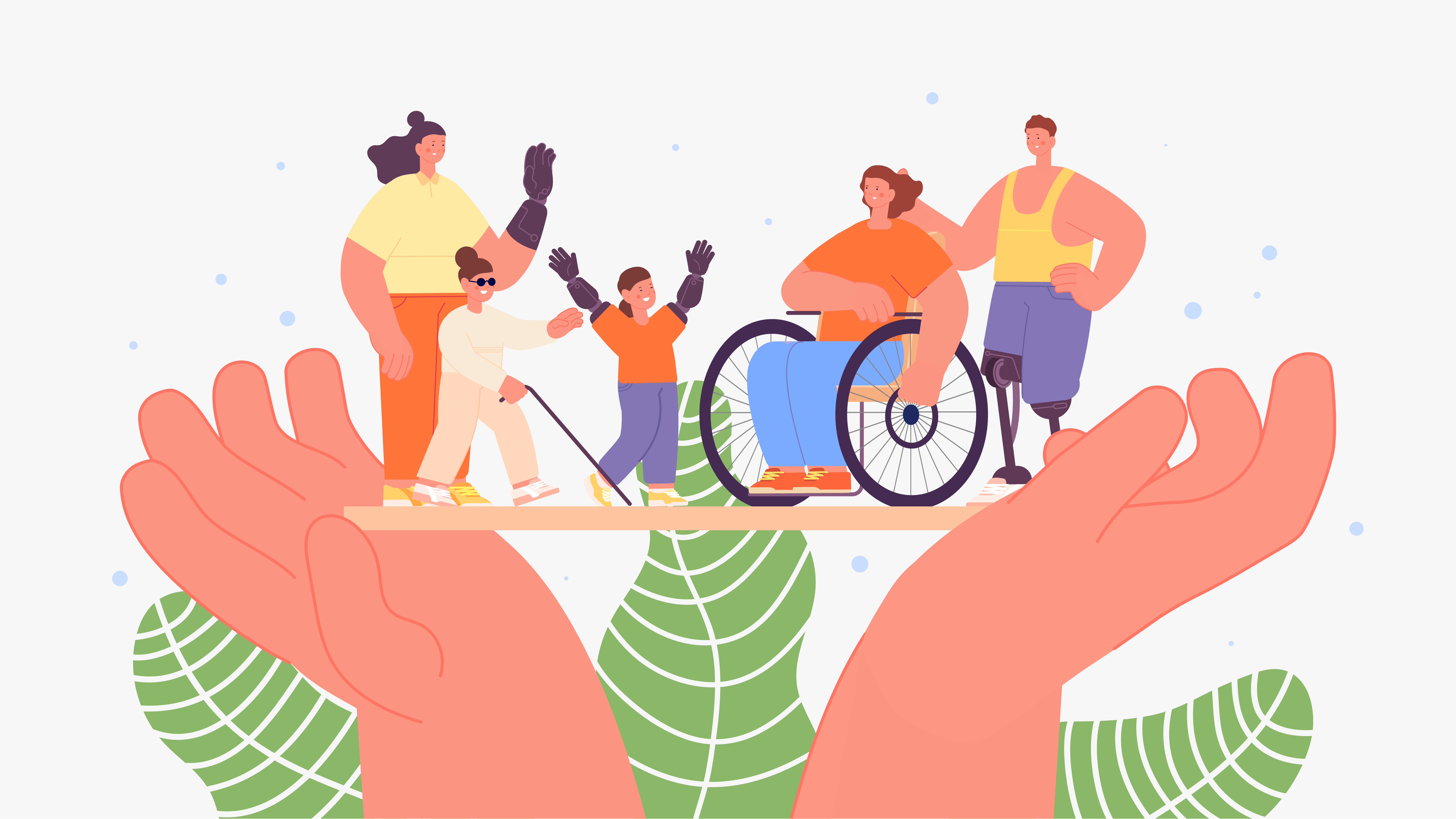In the digital world, every line of code, every pixel, and every interaction we design is a choice. For too long, the default choice has been to create for the “average” user—a mythical persona that represents the majority, leaving a significant portion of the population on the sidelines. But a new paradigm is gaining momentum, one that challenges this outdated approach and champions the principle of inclusive design. This is not just a trend or a compliance checklist; it is a fundamental shift in mindset that views diversity not as a limitation but as a source of innovation.
Inclusive design is the practice of creating products and services that are usable and accessible to the widest possible range of people, regardless of their abilities, age, background, or circumstances. It moves beyond the narrow focus of designing for a specific user and instead embraces the full spectrum of human experience. This approach is not only a moral imperative—it is a powerful business strategy that leads to products that are more resilient, more innovative, and ultimately, better for everyone.
This comprehensive guide is a deep dive into the world of inclusive digital experiences. We will explore the core principles that define this methodology, provide practical strategies for designing for different forms of disability, and examine why this mindset is the key to building a more equitable and profitable digital future.
The Foundational Principles of Inclusive Design

Before we can build inclusively, we must first think inclusively. This section lays out the philosophical and business arguments that form the bedrock of this practice.
A. The Spectrum of Abilities
The traditional view of disability is a binary one: a person either has a disability or they do not. Inclusive design rejects this notion. It recognizes that disability is not a permanent state but a mismatch between a person’s abilities and the environment they are in. It considers a wide range of abilities and sees them as part of a continuum. This includes:
- Permanent Disabilities: Such as a person who is blind, deaf, or has a permanent mobility impairment.
- Temporary Disabilities: Such as a person with a broken arm or someone who has temporary hearing loss from an ear infection.
- Situational Disabilities: Such as a person trying to use their phone in bright sunlight (visual impairment) or a parent holding a baby while trying to navigate a website with one hand (motor impairment).
By designing for a person with a permanent disability, you are often also designing a better, more robust experience for a person with a temporary or situational one.
B. The Business Case for Inclusion
Inclusive design is a smart business decision. A staggering one in five people in the world lives with a disability, a market segment with significant spending power. By ignoring this demographic, you are directly limiting your product’s reach and profitability.
- Market Expansion: Designing for accessibility opens your product up to a massive and often underserved market.
- Innovation: Solving for the needs of a diverse user base often leads to innovations that benefit everyone. Closed captions for the deaf, for example, are now a mainstream feature used by countless people watching videos in loud environments or without sound.
- Brand Reputation: Brands that demonstrate a genuine commitment to inclusivity build a positive reputation and foster strong brand loyalty.
- Legal Compliance: Many countries have laws and regulations, such as the Americans with Disabilities Act (ADA) in the United States, that require digital products to be accessible. Proactive inclusive design can mitigate legal risks.
C. Empathy as a Core Competency
The most important tool for an inclusive designer is empathy. This means moving beyond assumptions and actively seeking to understand the diverse lived experiences of your users. This involves engaging with people with disabilities, listening to their feedback, and recognizing your own biases. Empathy in design is a process of learning, listening, and evolving your perspective.
Designing for Different Forms of Disability
An inclusive designer must understand the specific challenges faced by different user groups and apply practical design principles to address them.
A. Visual Disabilities
This is one of the most common areas of focus in digital accessibility.
- Color Blindness: Affects a person’s ability to distinguish between certain colors.
- Design Solutions: Never use color alone to convey meaning (e.g., using a red button for an error and a green for success without a corresponding icon or text). Use clear labels, icons, and text alongside color. Ensure sufficient contrast ratios between text and background. The Web Content Accessibility Guidelines (WCAG) recommend a minimum contrast ratio of 4.5:1 for normal text.
- Low Vision: A wide range of conditions that result in partial vision.
- Design Solutions: Allow users to zoom in on a page without the layout breaking. Use a simple, clean layout with high contrast. Use a clear, legible font and provide an option for larger font sizes.
- Blindness: Users who are completely blind rely on assistive technology such as screen readers to navigate digital content.
- Design Solutions: All images must have descriptive alt text that is read aloud by a screen reader. The navigation must be logical and structured with clear headings and landmarks. All interactive elements (buttons, links) must be clearly labeled and their function explained.
B. Auditory Disabilities
This involves designing for people who are deaf or hard of hearing.
- Design Solutions: All video and audio content must have captions and transcripts. For complex audio-based information, such as podcasts or lectures, a full text transcript should be provided. Notifications that rely solely on sound should have a visual counterpart.
C. Motor Disabilities
These can range from temporary injuries to permanent conditions that affect a person’s ability to use a mouse or keyboard.
- Design Solutions: All digital interfaces must be fully navigable using only a keyboard. Ensure that a user can access every link, button, and input field without a mouse. Buttons and interactive elements should have large, well-defined target areas to accommodate users who may have difficulty with fine motor control. Avoid complex mouse gestures like hover-to-reveal menus.
D. Cognitive and Neurological Disabilities
This is a broad category that includes conditions like dyslexia, ADHD, autism, and cognitive impairments. Designing for this group is often referred to as cognitive accessibility.
- Design Solutions:
- Clarity and Simplicity: Use simple, direct language. Avoid jargon and complex sentences. Provide a clear and predictable navigation path.
- Consistency: The layout, iconography, and terminology should be consistent throughout the product.
- Reduced Distractions: Avoid flashing animations, pop-ups, and other distracting elements that can cause sensory overload. Break up large blocks of text with headings, images, and short paragraphs.
Key Accessibility Guidelines

While the principles provide a guiding philosophy, practical implementation requires a framework. The most widely recognized framework is the Web Content Accessibility Guidelines (WCAG), developed by the World Wide Web Consortium (W3C).
A. The WCAG Framework
The WCAG guidelines are based on four key principles that serve as the foundation for creating accessible content.
- Perceivable: Information and user interface components must be presentable to users in ways they can perceive. This means providing text alternatives for non-text content, and providing captions for audio.
- Operable: User interface components and navigation must be operable. This includes ensuring all functionality is available via a keyboard and giving users enough time to read and use the content.
- Understandable: Information and the operation of the user interface must be understandable. This involves making text readable and predictable and ensuring the UI is easy to learn and use.
- Robust: Content must be robust enough that it can be interpreted reliably by a wide variety of user agents, including assistive technologies.
B. Designing for Diverse Contexts
Inclusive design goes beyond disability to consider other variables that can affect a user’s experience.
- Situational Accessibility: A person on a subway with a poor connection needs a product that loads quickly and uses minimal data. Someone holding a child and using a phone with one hand needs an interface that is easy to navigate with a single thumb.
- Socio-economic Accessibility: Consider users with older devices, smaller screens, and slower or more expensive internet connections. Designing for this audience means creating a streamlined, lightweight experience that doesn’t require the latest technology.
The Inclusive Design Process
Inclusive design is not a phase; it’s a continuous practice that should be integrated into every stage of the product development lifecycle.
A. Research and User Testing with a Diverse Group
Move beyond testing with a narrow group of “typical” users. Actively recruit and engage with people with a range of abilities, backgrounds, and device preferences. This will provide invaluable feedback and ensure your product meets the needs of a diverse audience.
B. Integrating Accessibility from the Start (Shifting Left)
Building for inclusivity from the beginning is far more efficient than retrofitting an inaccessible product later. Digital accessibility should be a consideration from the very first brainstorming session, through wireframing, design, and development.
C. Using Accessibility Checkers and Tools
There are numerous tools available to help designers and developers check their work for common accessibility issues. Automated checkers can analyze code for issues like missing alt text or poor color contrast. These tools are a great starting point but should never replace human testing.
D. Fostering an Inclusive Mindset in the Team
Ultimately, inclusive design is a team sport. It requires a shared commitment from everyone involved, from product managers and designers to developers and quality assurance testers. Promoting an empathetic and inclusive culture within the team is the most effective way to ensure that accessibility remains a core priority.
Conclusion
The digital world has the potential to be the great equalizer, a place where information, services, and opportunities are available to everyone. But this potential can only be realized if we, as creators and innovators, commit to the principles of inclusive design. This is not an optional add-on; it is a fundamental element of a well-designed, high-quality, and ethical product. It is a philosophy that sees every user as a whole person, with their own unique abilities, circumstances, and needs.
The business case is clear: a more accessible product is a more profitable product. The moral case is equally compelling: to build products that exclude a significant portion of the population is to perpetuate inequality in an age of unprecedented digital connection. The Web Content Accessibility Guidelines (WCAG) provide a clear roadmap, but the real journey is an internal one. It is a shift in mindset from designing for the user we imagine to designing for the users who truly exist in the world—in all their diverse, complex, and beautiful forms.
By embracing this practice, we are not just solving for a niche problem; we are creating a more robust and resilient digital ecosystem for everyone. A product that is easy to use for a person with a permanent disability will be even easier to use for a person with a situational one. A product that is lightweight and fast for a user with a poor connection will be even more efficient for a user with a fast one. The principles of inclusive design are the very same principles that lead to superior user experience. The ultimate reward is not just a better product, but a more equitable and connected world where digital experiences are a source of empowerment, not exclusion.




